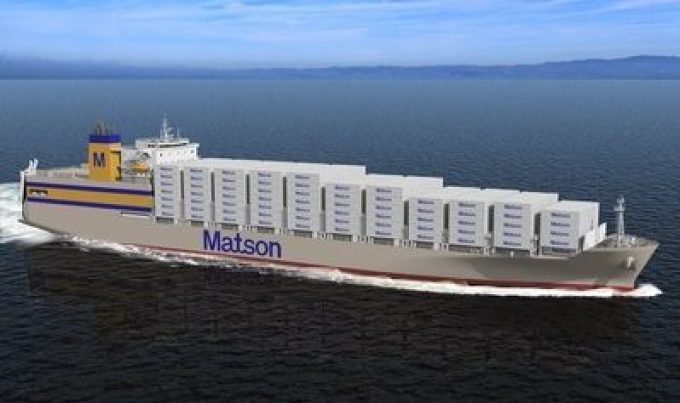Concern over rates peak and Hamas ceasefire 'spooks' container futures
Reports of renewed discussions for a ceasefire between Israel and Hamas have startled shippers and ...
TFII: SOLID AS USUALMAERSK: WEAKENINGF: FALLING OFF A CLIFFAAPL: 'BOTTLENECK IN MAINLAND CHINA'AAPL: CHINA TRENDSDHL: GROWTH CAPEXR: ANOTHER SOLID DELIVERYMFT: HERE COMES THE FALLDSV: LOOK AT SCHENKER PERFORMANCEUPS: A WAVE OF DOWNGRADES DSV: BARGAIN BINKNX: EARNINGS OUTODFL: RISING AND FALLING AND THEN RISING
TFII: SOLID AS USUALMAERSK: WEAKENINGF: FALLING OFF A CLIFFAAPL: 'BOTTLENECK IN MAINLAND CHINA'AAPL: CHINA TRENDSDHL: GROWTH CAPEXR: ANOTHER SOLID DELIVERYMFT: HERE COMES THE FALLDSV: LOOK AT SCHENKER PERFORMANCEUPS: A WAVE OF DOWNGRADES DSV: BARGAIN BINKNX: EARNINGS OUTODFL: RISING AND FALLING AND THEN RISING

Transpacific container carryings from Asia to the US west coast fell sharply in last year’s fourth quarter reflecting weak consumer demand and concerns over the lack of a new dock labour agreement.
US domestic and transpacific carrier Matson saw its China service volumes collapse by 47%, year on year, in Q4, from 106,000 to 56,000 teu.
The decline followed the Honolulu-based company’s decision to terminate its China-California Express (CCX) premium loop in September, ahead of the peak season, and its quarter-on-quarter comparisons were also skewed by an extra week being added in Q4 21.
And Matson’s Q4 preliminary net income – down from $395m in Q4 21 to $70m to $75m in Q4 22 – is a stark precursor to the carrier results season and reveals the extent of the turnaround in the transpacific container market.
Matson’s chairman and CEO Matt Cox said its transport and logistics business had “performed well in a difficult business environment”, but the carrier’s China service results had been negatively affected by lower volumes and lower freight rates.
Announcing the numbers, he added: “As we mentioned on our November earnings call, we expected the fourth quarter of 2022 and the first quarter of 2023 to be challenging in the transpacific tradelane, as retailers’ inventories adjust to consumer demand levels.
“As such, we expect our CLX and CLX+ (China) services in the first quarter and first half of the year to reflect freight demand levels below normal conditions, with lower year-on-year volumes and a lower rate environment.”
Mr Cox said that, unless the US experienced an economic hard landing, Matson expected “improved trade dynamics in the second half of 2023, as the transpacific marketplace transitions to a more normalised level of demand”.
He noted: “Regardless of the economic environment, we operate the two fastest and most reliable ocean services and, as a result, we expect to continue to earn a significant premium to the Shanghai Containerized Freight Index.”
Matson also saw softer demand impact its domestic tradelanes. Container volumes on the carrier’s Hawaii service decreased 13% year on year to 72,000 teu, Alaska service liftings were down 8%, to just under 36,000 teu, and its Guam volumes declined 14%, to around 9,600 teu.
Meanwhile, operating income from Matson Logistics was between 13% and 18% lower during the period, at $12m to $13m, “primarily due to a lower contribution from supply chain management consistent with lower demand on the transpacific tradelane”, said Mr Cox.
According to Alphaliner data, Matson operates a fleet of 29 ships (nine being chartered), for a total capacity of 65,747 teu.
In November, Matson announced it had placed an $1bn order with the US-based Philly Shipyard for three 3,600 teu LNG dual-fuelled Jones Act-compliant ships for delivery between 2026 and 2027.
Comment on this article